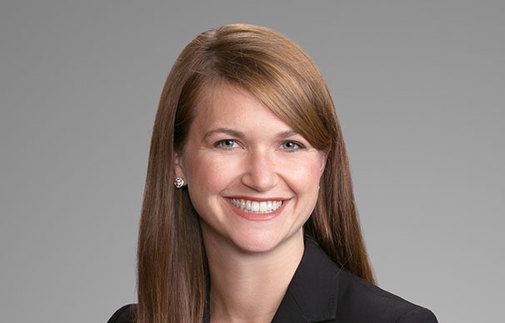Employment Alert: "CARES Act: Paycheck Protection Program for Small Businesses"
On Friday, March 27, 2020, President Trump signed the Coronavirus Aid, Relief, and Economic Security Act (“CARES Act”). One of the objectives of the CARES Act is to provide cash flow to assist small businesses in maintaining their workforce during the coronavirus pandemic. Although there are many components to the CARES Act (including increasing unemployment benefits, a payroll tax credit, and deference of employer’s share of Social Security tax, among others), this alert will focus on the Paycheck Protection Program (“PPP”).
As detailed below, the PPP provides 100% federally guaranteed loans to small businesses, which may be forgiven if the proceeds are used for certain designated purposes and employers maintain or restore their workforces.
1. Which businesses are eligible for the PPP loan?
Businesses that meet the following criteria qualify for a loan:
- In operation before February 15, 2020. Lenders will assess whether the business had employees on payroll and whether payroll taxes were paid before this date.
- Small businesses with less than 500 employees
- Small businesses that otherwise meet the SBA’s size standard applicable to the business’s industry under existing SBA regulations
- An individual who operates a sole proprietorship
- An individual who operates as an independent contractor
- An individual who is self-employed who regularly carries on any trade or business
- A 501(c)(3) non-profit with less than 500 employees
- A 501(c)(19) veterans organization that meets the SBA size standard
- A tribal business that meets the SBA size standard
2. Can businesses that have less than 500 employees per location, including businesses operating as a franchise still qualify?
Yes. For businesses in the accommodation and food services industry that are assigned a North American Industry Classification System (“NAICS”) code beginning with 72 by the Small Business Administration (“SBA”), the business is eligible if it employs less than 500 employees per physical location. For franchises that are assigned a franchise identifier code by the SBA, affiliation rules are waived.
3. Which employees are included in the calculation to determine whether the business has less than 500 employees?
All employees must be included in the calculation, including full-time, part-time, foreign employees, and any other status (including seasonal and temporary).
4. Where can businesses apply for the PPP loan?
Businesses can apply at any lending institution that is approved to participate in the Program through the existing SBA 7(a) lending program, as well as additional lenders approved by the Department of Treasury. Many community banks already participate in the SBA’s lending programs. You can visit www.sba.gov for a list of SBA lenders.
5. What will lenders ask borrowers to provide?
Lenders will ask for a good faith certification of the following:
- The uncertainty of current economic conditions makes the loan request necessary to support ongoing obligations.
- The borrower will use the loan proceeds to retain employees and payroll, or to make mortgage, lease, and utility payments.
- The borrower does not have a duplicative loan or duplicative application pending.
- Additional documentation will be required of independent contractors, sole proprietors, and self-employed individuals seeking the loan.
- Accrual of interest continues; payment is deferred.
6. What are the advantages of the loan?
There are several advantages to the loan, including zero loan fees, zero pre-payment fee, a fixed interest rate “not to exceed 4.00%” (a recent publication by the Treasury Department stated it could be as low as 0.5%), no personal guarantee or collateral required, and the potential to defer principal and interest payments for 6 months to a year after disbursement of the loan. However, the greatest advantage of the loan is that a portion of the loan (including principal and interest) may be forgiven if certain criteria are met, as further detailed under Question 10 below.
7. How much can an eligible business borrow?
Eligible businesses can borrow up to 250% of their average monthly “Payroll Costs” (a defined term, see below), not to exceed $10 million. The loan amount is intended to cover 8-weeks of payroll, and any additional amounts can be used on other qualified expenses.
- For businesses that were operational between February 15, 2019 – June 30, 2019: 250% of the businesses average monthly Payroll Costs during the twelve (12) months before the loan date.
- For businesses that were not operational between February 15, 2019 – June 30, 2019: 250% of the businesses average monthly Payroll Costs between January 1, 2020 and February 29, 2020.
- For seasonal employers: 250% of average monthly Payroll Costs for the 12-week period beginning February 15, 2019 or March 1, 2019 at the borrower’s discretion.
8. How are Payroll Costs calculated?
Payroll Costs are calculated by adding the sum of the following compensation payments made to employees.
Included are:
- Salary, wage, commission, or similar compensation
- Payment of cash tip or equivalent
- Payment for vacation, parental, family, medical, or sick leave
- Allowance for dismissal or separation
- Payment required for the provision of group health care benefits, including insurance premiums
- Payment of any retirement benefit
- Payment of state or local tax assessed on the compensation of the employee
Excluded are:
- The prorated portion of any compensation of an individual employee in excess of an annual salary of $100,000
- Payroll taxes, railroad retirement taxes, and income taxes
- Any compensation of an employee whose principal place of business is outside of the U.S.
- Qualified paid leave under the Families First Coronavirus Response Act
9. What are eligible expenses that the loan proceeds can be applied towards?
In addition to the permitted uses of loan proceeds under the SBA’s existing Section 7(a) loan program, the loan can be used to cover the following expenses if incurred in the ordinary course of business:
- Payroll Costs (as defined above)
- Continuation of group health care benefits during periods of paid sick, medical, or family leave, and insurance premiums
- Employee salaries, commissions, or similar compensation
- Payments of interest (but not principal) on debt obligations, including mortgages, incurred prior to February 15, 2020
- Rent (including rent under a lease agreement)
- Utilities (including electricity, water, gas, transportation, phone and internet service)
10. What amount of the loan may be forgiven and what are the eligibility requirements?
The amount of the loan that is eligible for forgiveness is the amount the borrower spent on the following expenses during the 8-week period beginning on the loan origination date:
- Payroll Costs (as defined above)
- Interest on mortgages incurred in the ordinary course of business prior to February 15, 2020, but not interest on unsecured debt
- Rent, under lease agreements in force before February 15, 2020
- Utilities (including electricity, water, gas, transportation, phone and internet service), for which service began before February 15, 2020
Due to likely high subscriptions, the Treasury Department recently advised that it is an anticipated that not more than 25% of the forgiven amount may be for non-payroll costs.
The amount of the loan that will be forgiven for the eligible expenses listed above will be decreased if (1) there is a reduction in the number of employees or (2) if there is a reduction of more than 25% of employee wages. The decrease in loan forgiveness will be calculated as follows:
- Decrease for reduction in number of employees:
(Payroll Costs) X (Avg. # Full Time Employees for 8-weeks beginning on origination)
Avg. # Full Time Employees from Feb. 15, 2019-June 30, 2019
- Decrease for reduction in salaries for employees that did not earn more than $100,000 in 2019:
(Payroll Costs) – (Amt. of reduction in wages over 25% compared to most recent quarter)
If by June 30, 2020, the borrower restores wages and/or rehires employees to cure the reduction in employees and/or salaries, the amount of loan forgiveness will not be decreased for reductions in employment or wages that occurred between February 15, 2020 through April 27, 2020.
The lender will require the borrower to submit an application for loan forgiveness, which will require documentation related to payroll, verification of payments for eligible expenses, and a certification from a representative of the business. The lender will make a determination of eligibility and the amount of forgiveness within 60 days after receipt of the application.
The borrower will not be responsible for the interest accrued during the 8-week period if the full principal is forgiven.
11. What are the terms of the loan?
The maximum term of the loan is up to 10 years, with an interest rate “not to exceed 4.00%.” In a recent publication, the Treasury Department stated that interest rates could be as low as 0.5%. The upcoming SBA regulations may clarify covered loan interest rate. Loan payments (including, principal, interest, and fees) will be deferred for six months from the origination date. Interest will continue to accrue over this period. There are no prepayment penalties or fees. No collateral or personal guarantee is required.
12. When can I apply?
Starting April 3, 2020, small businesses and sole proprietorships can apply for and receive loans to cover their payroll and other certain expenses through existing SBA lenders.
Starting April 10, 2020, independent contractors and self-employed individuals can apply for and receive loans to cover their payroll and other certain expenses through existing SBA lenders.
Other regulated lenders will be available to make these loans as soon as they are approved and enrolled in the program.
13. When is the application deadline?
June 30, 2020.
* * *
The government will be providing guidance on the CARES Act, including further information on application of the Paycheck Protection Program, in the upcoming weeks. As guidance is provided, we will continue to update this alert with additional information.
Attorneys
- Senior Counsel
- Partner
- Partner



